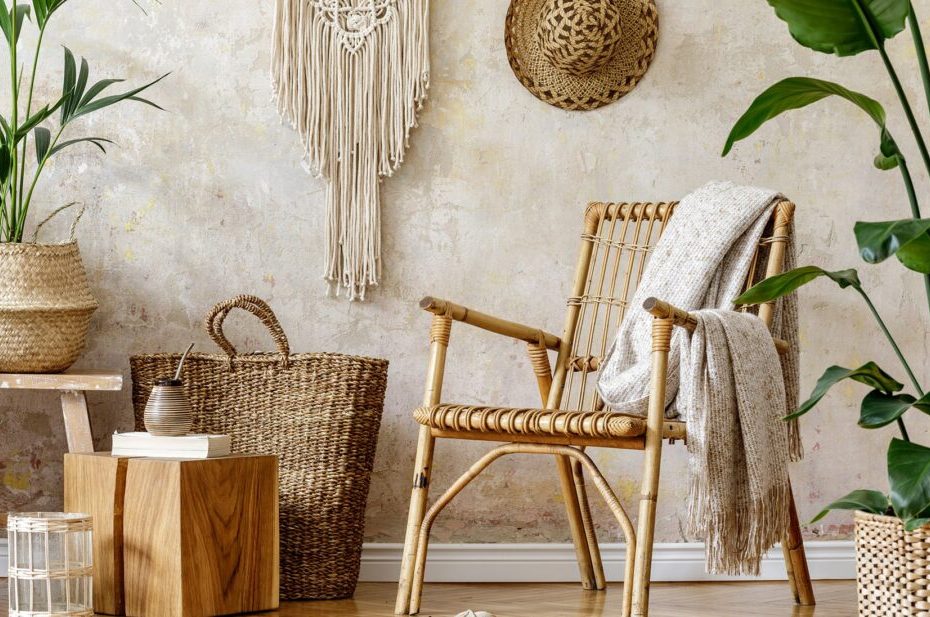It’s a quiet Sunday morning, and sunlight is spilling through the curtains—not the heavy synthetic drapes that used to block the light, but airy, organic cotton ones that sway gently with the breeze. The air smells faintly of cedar from the reclaimed wood coffee table, and there’s a calm that comes from knowing every corner of this home was created with care for both style and the planet. This is what sustainable living feels like—less about sacrifice, more about living in harmony with the spaces we call our own.
The Shift Toward Mindful Homes
Over the past few years, something has changed in how we think about our homes. In 2025, décor is no longer just about trends or matching colors—it’s about choices that reflect who we are and what we value. People are moving away from throwaway culture, choosing fewer but better things. That sideboard in the dining room might be a refurbished piece from a local thrift store. The living room rug might be handwoven from recycled fibers, bought directly from artisans who are paid fairly for their craft.
The joy of sustainable décor isn’t just in its visual appeal; it’s in the stories it carries. A dining table made from reclaimed timber has a history. A lamp base crafted from recycled glass has already lived a life before it found its way into your home. Every object becomes part of a bigger narrative—one where beauty and responsibility intertwine.
Nature as the Heart of Design
A big part of eco-friendly decorating is letting nature guide the mood of the space. Houseplants are no longer just accents; they are part of the architecture, softening sharp corners and filtering the air naturally. Hanging planters made from coconut coir, terracotta pots painted with non-toxic pigments, and vertical gardens on balcony walls make greenery possible even in urban apartments.
Lighting, too, has shifted—LED fixtures with warm tones are now standard, not only for energy savings but for the cozy atmosphere they bring. Skylights and larger windows are being used more in renovations, welcoming daylight as the main source of illumination. And when the sun goes down, dimmable lamps paired with solar-powered garden lights keep the home glowing without guzzling electricity.
The Art of Choosing Well
Sustainable décor in 2025 isn’t about buying everything labeled “eco-friendly” all at once. It’s about thoughtful curation. Instead of synthetic leather chairs, people are embracing plant-based alternatives like cactus leather. Instead of mass-produced prints, walls are decorated with handmade ceramics, botanical illustrations, or even upcycled art created from scrap materials.
The kitchen sees its own transformation—bamboo utensils, compost bins that double as chic countertop pieces, reusable beeswax wraps instead of cling film. Bedrooms have switched to organic bedding, free of harsh dyes, while mattresses are made with natural latex and coconut fiber. Each choice, however small, adds up to a home that feels good to live in—not just aesthetically, but ethically.
The most surprising thing about making these eco-friendly upgrades is how natural it feels. The home becomes lighter—not only in carbon footprint but in atmosphere. The clutter of unnecessary, disposable items fades, replaced by objects that truly belong. In a world where sustainability often sounds like a duty, creating a home like this feels less like a responsibility and more like a privilege—a quiet, everyday luxury that just happens to be kinder to the earth.
Sustainable Décor Starter Kit for 2025
1. Materials to Embrace
- Reclaimed Wood – Perfect for coffee tables, shelving, and headboards.
- Organic Cotton & Linen – Ideal for curtains, bedding, and cushion covers.
- Bamboo & Rattan – Lightweight, renewable options for chairs, baskets, and storage.
- Recycled Glass & Metal – For lighting fixtures, vases, and decorative accents.
- Plant-Based Leather – Cactus, apple peel, or mushroom leather for seating and accessories.
2. Eco-Friendly Color Palettes
- Nature-Inspired Neutrals – Sand beige, clay, stone gray, sage green.
- Earthy Accents – Terracotta, deep forest green, burnt sienna.
- Soft Light Reflectors – Warm whites and pale yellows to enhance daylight.
3. Quick Décor Swaps
- Swap synthetic rugs → handwoven jute or organic cotton rugs.
- Replace plastic planters → terracotta, ceramic, or coconut coir pots.
- Switch mass-produced wall art → locally made or upcycled art pieces.
- Upgrade incandescent bulbs → warm-toned LEDs or solar lamps.
- Change polyester curtains → organic cotton or hemp drapes.
4. Green Living Add-ons
- Indoor Plants – Snake plant, pothos, peace lily for clean air and low maintenance.
- Compost Bin – Small countertop bins for food waste that double as stylish accents.
- Water-Saving Fixtures – Low-flow taps and showerheads with sleek designs.
- Energy-Efficient Appliances – Rated 5-star or above to cut electricity use.
5. Low-Waste DIY Ideas
- Turn wine bottles into pendant lights.
- Use old sarees or linens for cushion covers.
- Create a vertical herb garden from a wooden pallet.
- Upcycle tin cans into pen holders or small plant pots.
